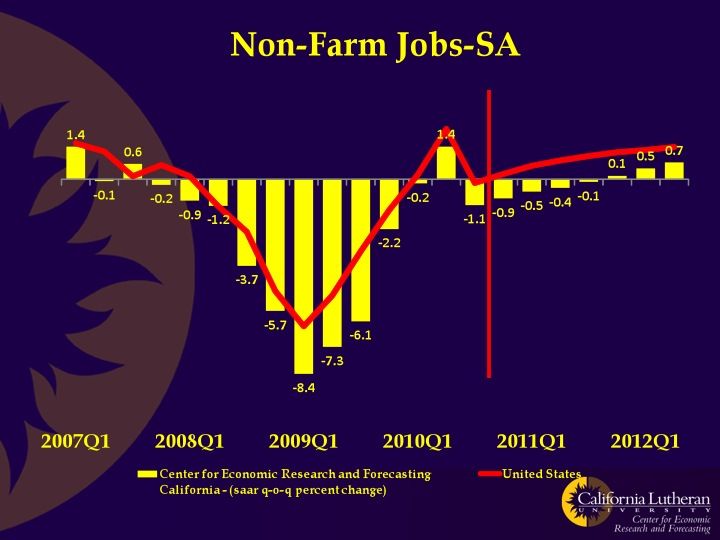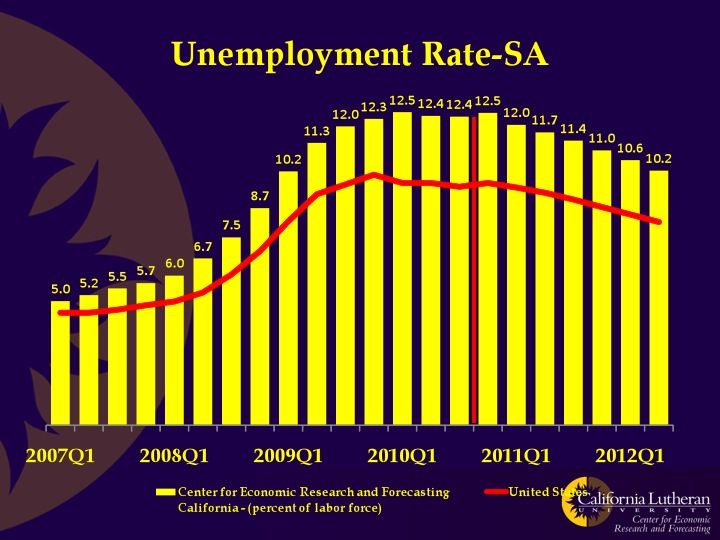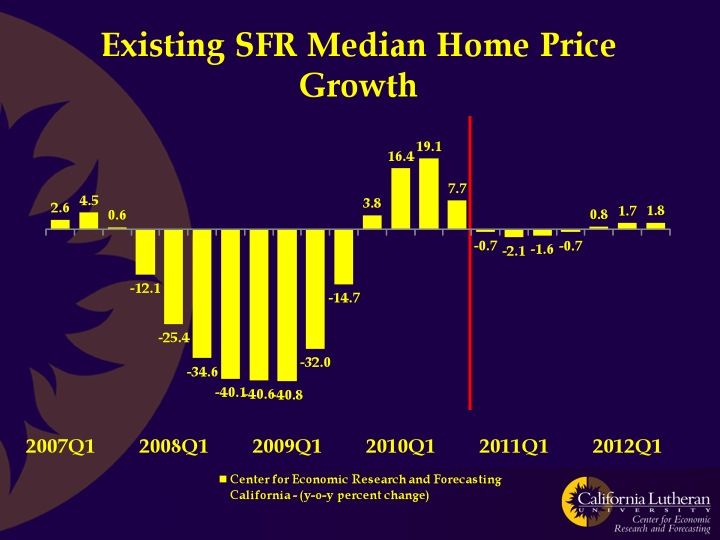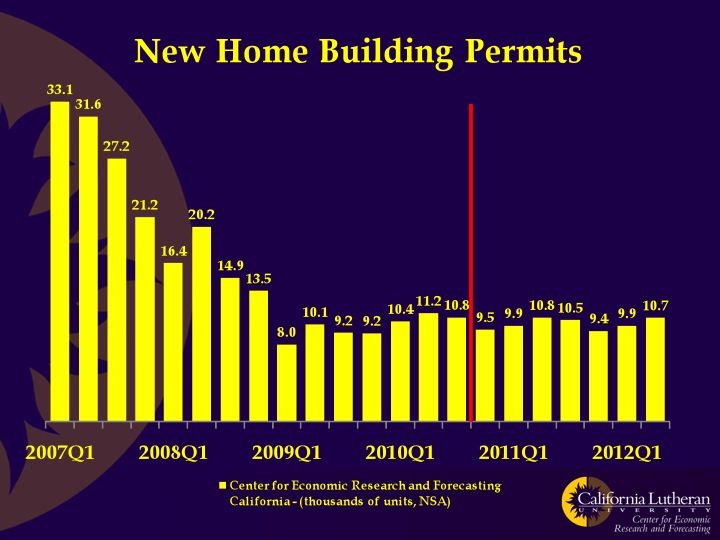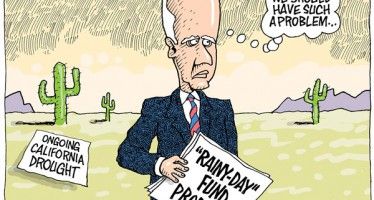CA Economy Holding Back Nation
DEC. 20, 2010
By JOHN SEILER
Strong doses of reality keep throwing cold water over Gov.-elect Jerry Brown. The mess left behind by departing Gov. Arnold Schwarzenegger seems to grow worse every day.
The latest cold water splashing comes from California Lutheran University’s Center for Economic Research and Forecasting (CERF) and its forecasts for the U.S. and California economies. It starts with the “good news. This is CERF’s first published report where we do not forecast any quarter with net United States job losses. It appears that the job recovery, weak as it is, is finally here.”
But even that weak economic recovery is avoiding California. The forecast expects, “Our forecast for California jobs is for small and declining job losses throughout 2011. Output, though, will continue to grow, at rates near those of the United States. Thus, while California will technically be in recovery, few will feel the impacts of that recovery.”
Call it the non-recovery recovery. Only in California.
This chart shows non-farm jobs for California and the United States. Note how California (yellow bars) lost jobs more quickly than did the United States as a whole (red line), and now is creating jobs at a lower rate.
I would add that California’s slow growth is retarding overall U.S. growth. The state that once carried America out of recessions into prosperity now is a straggler holding everyone back.
Deficits and unemployment
There’s no good news here for the state’s $28 billion deficit. “I’m not that optimistic that there is a long-term solution to the budget deficit,” Bill Watkins, executive director of CERF, told me. “That’s just another reason why California’s recovery will be more slow than the nation as a whole. We have a 30 percent unemployment premium over the nation.” This calculation is similar to my “California Jobs Gap” calculation.
“That will persist,” Watkins added. “That’s another reason why California will lag the nation in recovery.”
Here’s CERF’s chart of state and U.S. unemployment rates:
Taxes and AB32
Two big issues facing the state are potential tax increases and the implementation of AB32. On taxes, it’s looking like Brown, once in office, will give voters an ultimatum: raise taxes or endure even greater budget cuts than otherwise would be enacted.
Tax increases “would stifle the recovery,” Watkins warned. “But we don’t see tax increases causing a double-dip recession. A soft recovery would become even softer.”
Another concern is AB32, the Global Warming Solutions Act of 2006. It will be thoroughly implemented in 2011. One study predicted that it would kill up to 1.1 million jobs. Watkins told me the jobs likely won’t be killed, they just won’t be created. “We’re forecasting job losses for the next several quarters,” he said. “AB32 is a big part of it.”
A Dec. 3, 2010 report that Watkins wrote for CERF (separate from the forecast) found:
We performed an extensive review of the economic impacts of one of California’s most important greenhouse gas regulation, AB32, and found that command and control regulation in general and AB32 in particular is inefficient, cost jobs, and depress economic activity. California’s Legislative Analyst’s Office agrees, as evidenced by this report.
The dismal revenue situation is seen clearly in the following graph, of real retail sales growth, which is stagnant in the near future. It means there state revenues are not going to get a boost from increases in sales, and subsequent sales taxes.
The next graph shows that real wage and salary income also will be stagnant. So there won’t be any help for the budget from growth in people’s incomes, and subsequent income taxes.
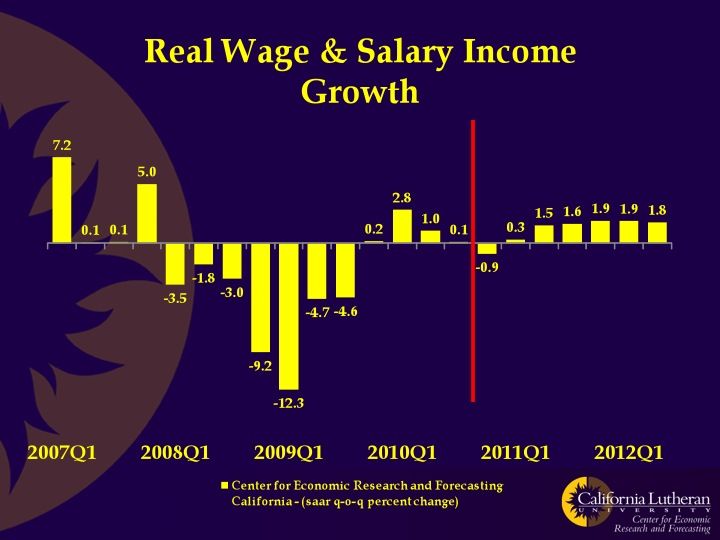 California’s budget is stuck in an absurd Catch-22. Tax increases to close the budget gap end up reducing the jobs and sales bases from which taxes are taken, requiring even more tax increases.
California’s budget is stuck in an absurd Catch-22. Tax increases to close the budget gap end up reducing the jobs and sales bases from which taxes are taken, requiring even more tax increases.
High cost of business
The new CERF forecast also found, as other studies have, that California is especially hard on businesses:
Housing stagnation
Can the California Dream be restored?
Related Articles
Brown submits May Revise budget
Yesterday, Gov. Jerry Brown submitted the May Revision of his 2014-15 budget proposal with a mixture of line-item revisions. Most were
The clash over health care
Jan. 28, 2010 By KATY GRIMES On a vote of 22 to 14, the California State Senate today approved Senate
Study raises doubts about effects of local control in schools
When Gov. Jerry Brown persuaded the Legislature to pass the Local Control Funding Formula in 2013 – the biggest change in

